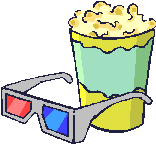 Lateral movement of the spine; a zesty ingredient to add to your daily diet.
Lateral movement of the spine; a zesty ingredient to add to your daily diet.Let's make this a little more simple, by reviewing the previous article from yesterday. I'll wait; Go take a peek! Get your mirror, your chair, your rolled up towel (if needed), your music of choice, and your very own special spot.
READ ALL OF THE FOLLOWING BEFORE PROCEEDING:
- Find your chair, sit upright (no leaning back or forward) with your body aligned. CORE engaged, as instructed in yesterday's article, let's begin.
- With your arms up and just below shoulder height and out to the side (a little forward of the shoulder), inhale to prepare. This position can help to protect the shoulder area. Again, if you have something going on with your shoulder girdle, seek a professional. If you are able to exercise, you can crisscross your arms across your chest to protect your shoulder/arm.
- As you exhale, begin to slowly laterally take your torso up-and-over to your right side only as far as you can keep your tush planted on the chair. If one of your cheeks begins to lift, STOP. That's your body sending you a memo. Stay within your range-of-motion. Too, seize the moment: work on keeping your tush/hips square in front of you, and down.
- Allowing your arms to float with you, but keeping them in the same plane, same level, same distance a part. Keep them stable.
- Inhale at the bottom. As you exhale, begin to return slowly to the top. Stop.
- Inhale to prepare. Exhale as you begin to lift up and over to your left side.
- Inhale at the bottom. Exhale as you begin lifting yourself back up slowly to the beginning position. Stop. Repeat 5 x on both sides.
I stress saying up-and-over, because we are NOT talking about slumping over to the side. Too many people get caught in that trap. This is NOT about seeing how far you can lean. Again, it's about precision and control. Up-and-Over? That means you are lifting UP your body, your rib cage, and then slowly moving laterally from the torso OVER, or OUT to the side.
All too often we think putting our bodies in a wide range of motion, ROM, is the desired goal. That works for those who are far advanced, and most of us may never be there. What matters is that you find the ROM for your particular body. Keeping that range is critical to performing the move so that you do not lose control of your stability and balance. Therefore, we can comfortably say: ROM=Stability, Balance, Control.
CAUTION: Exercise at your own risk. Seek a trusted health professional before starting any exercise program.
Copyright © 2008 by Ellen M. Samples. All rights reserved.





 Enjoy
Enjoy











